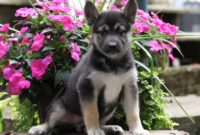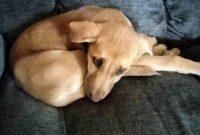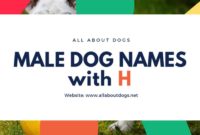
Show Me A Picture Of A Pomeranian – Oops! Something seems wrong. Please try again or come back later. Try again Maybe you’re thinking about getting a puppy later? Join Growing Pup and get our expert help to help you find the right puppy and get ready for your new arrival. When you find your new puppy, tell us more about them to receive a discount on one of our puppy collections and regular personalised puppy advice. Thanks! Thank you for joining the growing puppies. The next day, you’ll get your first expert advice on raising a puppy, so keep an eye on your inbox! First Name Last Name Email Address By registering you agree to the processing of your personal data by Nestlé Petcare UK&I and its affiliates. You will receive communications from ® UK&I and can update your communications preferences or unsubscribe at any time. Please see our Privacy Policy.
The delicate little Pomeranian sparkles with personality and kindness. Spitzers are the smallest breed, and they look almost like miniature foxes, with a long, erect outer coat and a thick undercoat that makes them look like a wad of down.
Show Me A Picture Of A Pomeranian
They are lively and energetic puppies who are very loyal to their family, although they are usually attached to a single person. Pomeranians love to play and spend time with their beloved owners, but it’s important that they have the opportunity to become “real dogs.” They’re excellent watchdogs because they’re very good at vocalizing and keeping an eye out for anything unusual – or anything! Despite their gentle and loving nature and passionate attitude towards life, care must be taken as they are small and very fragile under the fur.
Top 15 Most Popular Pomeranian Mix Dogs
Still, the Pomeranian (or “Poms”) is almost certainly descended from the Arctic sled dog, and may be related to the Keshund, Norwegian Elkhound, and Samoyed. These small domestic dogs were intentionally bred by stepping down in size, but when they arrived in the UK with the German-born Queen Charlotte, they were very different from what we know today – they were white and more Large (9-14 kg). They quickly caught on, especially among royalty, so when Queen Victoria visited Florence and saw a much smaller variety there, she brought them home. The Queen went on to breed them and exhibited them at Cruft in 1891, where (unsurprisingly!) she won Best Breed. After his death in 1901, selective breeding of the small size continued until the puppies we know today developed, while the large size dogs all but disappeared from England.

The Pomeranian has very low requirements for exercise and is satisfied with a daily walk or jog in the garden with its owner. They can walk longer if they stay fit and active. Their main focus is social contact with their owners, but as working-bred offspring, they enjoy interactive play to keep them focused and prevent boredom and excessive noise.
Pomeranians can live in almost any home because they don’t need a lot of space. They need access to outdoor spaces for daily walks and toilet trips (especially to train them successfully, you need to be able to take them out often).

Pomeranian Named ‘betty White’ Gets Forever Home
Toy dogs have fast metabolisms, which means they burn energy at a high rate, but their small stomachs mean they need to eat very little and often. The smaller kibble is specially formulated to contain the right levels of key nutrients and the smaller kibble is suitable for smaller mouths. It also aids in chewing and improves digestion.
For a puppy, Pom has a huge coat and thick undercoat. They will benefit from daily grooming, but of course, they should have a full grooming twice a week to prevent growth and keep them healthy. A fine or rough brush can easily damage the coat, so a wide-toothed comb is ideal. The legs need to be trimmed from time to time.

It’s easy to underestimate these puppies, but they are very easy to train and love to work with their owners. Poms are known to successfully compete in mini speed races and learn various tricks. In any case, they should be taught to walk with a seat belt and have a good memory (not that they are usually far from their owners). Like many toy breeds, expect potty training to take longer than larger breeds.
Pomeranian (pom): Dog Breed Characteristics & Care
While Poms are friendly and get along with everyone, they are too refined for active or boisterous young families. However, they do well in families with older, brighter kids.
While many dogs are traditionally considered nice to children, all dogs and children need to be taught to communicate and respect each other and be safe together. Even so, dogs and young children shouldn’t be left alone, and adults should supervise all interactions between them.
Weekly Pawsonalized puppy tips delivered straight to your inbox. Gain unparalleled access to an expert team of in-house veterinarians, behaviorists and consultants who are always here to help – just call, email, and small, but don’t be fooled by their cute, fluffy looks – velvet The balls fit a larger dog in their small frame. These daring pups are active, curious and love to show. Be prepared to receive many compliments on their outgoing personalities and lion-like manes. With Pom, the whole world is their stage, and you are their biggest fan.

Pomeranian Colors With Pictures
The following are the characteristics of raising a Pomeranian on a scale from 1 (low) to 5 (high). These attributes have been evaluated by several pet experts, including dog trainers, veterinarians and behaviorists. Remember that dogs are individuals and not all dogs, even one breed, fit this pattern.
The Pomeranian is a small dog with a very different appearance. Their most common color is sunset red-orange, and their fluffy fur can make them look like lion cubs. They have almond-shaped eyes, black eyes and ink-like ears set high on their heads. Their expressive and feathery tails extend to the back of their double coats.

They have black noses, but can also be “self-colored” (coat matching) of blue-gray, chocolate, and aver varieties.
Pomeranian: Character & Ownership
Poms are available in nearly 2 colors, including patterns and markings. Orange and red coats are the most common.
Happy-go-lucky is a Pomeranian middle name because of their friendly and curious personality. They live for social interaction and make their pet parents laugh out loud.
If you have kids at home, you’ll be happy to know that this dog’s nature isn’t usually aggressive. Pomeranians are not known to bite, but any dog will bite if provoked. So keep an eye out for babies and preschoolers who may accidentally drop or squeeze this fluffy ball of fur — it’s easy to mistake a small Pomeranian for a cute stuffed animal. However, this breed is known to be very compatible with their extended family, be it other dogs, cats or children.

Characteristics Of Pomeranian Dogs
They not only have looks, but also intelligence. Poms have a knack for spades and are good at learning new and interesting tricks. If you are looking to try an obedience class with your Pomeranian, this breed is very intelligent and will probably get good reviews!
Not surprisingly, Pomeranians excel at jobs like therapy dogs, and are considered a good watchdog because they’re not afraid to bark. If looking absolutely cute is a way to hire, then Pom fulfills that requirement too – you should hire this fur baby, right now!

Pomeranians are sometimes described as arrogant, which may be a reference to their proud gait and lively personality. Smart, well-mannered, and attentive to everything around them, the Pomeranian’s generally positive disposition puts them at the forefront of many types of households.
Pomeranian Dog Pictures
Pomeranians may look well-maintained, but they’re more than just a fluffy fur coat. Poms are super smart and love to learn new skills. They’re also active puppies, but they’re easy to train — even in your own home. (They have really short legs after all!)

A Pomeranian haircut needs a little lather to keep it looking sharp, so bathe your dog with lukewarm water every four weeks. Dry with an absorbent towel, then use a hair dryer (but never leave the dog unattended). It is recommended to brush your teeth several times a week (if not daily) and twice a week to remove loose and matted hair.
The wire brushes are perfect for Pom’s thick coats, and the smaller sizes fit their variety of small hairstyles, including the Pomeranian teddy cut (short body hair and longer face and ear hair, cut in a circle – ouch! )and







